This pub stands on the site of a ginger beer factory, later used as a Salvation Army barracks, and takes its name from its location on the edge of town.
A print and text about travelling through Reading.
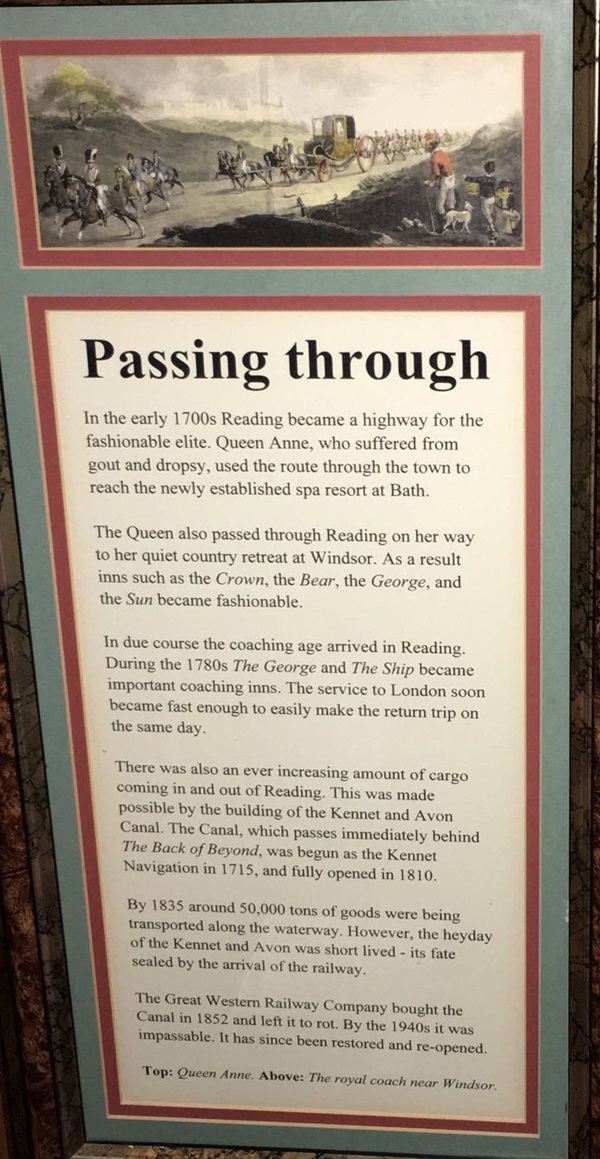
The text reads: In the early 1700s Reading became a highway for the fashionable elite. Queen Anne, who suffered from gout and dropsy, used the route through the town to reach the newly established spa resort at Bath.
The Queen also passed through Reading on her way to her quiet country retreat at Windsor. As a result inns such as The Crown, The Bear, The George, and The Sun became fashionable.
In due course the coaching age arrived in Reading. During the 1780s The George and The Ship became important coaching inns. The service to London soon became fast enough to easily make the return trip on the same day.
There was also an ever increasing amount of cargo coming in and out of Reading. This was made possible by the building of the Kennet and Avon Canal. The canal, which passes immediately behind The Back of Beyond, was begun as the Kennet Navigation in 1715, and fully opened in 1810.
By 1835 around 50,000 tons of goods were being transported along the waterway. However, the heyday of the Kennet and Avon was short lived – its fate sealed by the arrival of the railway.
The Great Western Railway Company bought the canal in 1852 and left it to rot. By the 1940s it was impassable. It has since been restored and re-opened.
Top: Queen Anne
Above: The royal coach near Windsor.
A photograph of Kings Road, Reading, c1912.
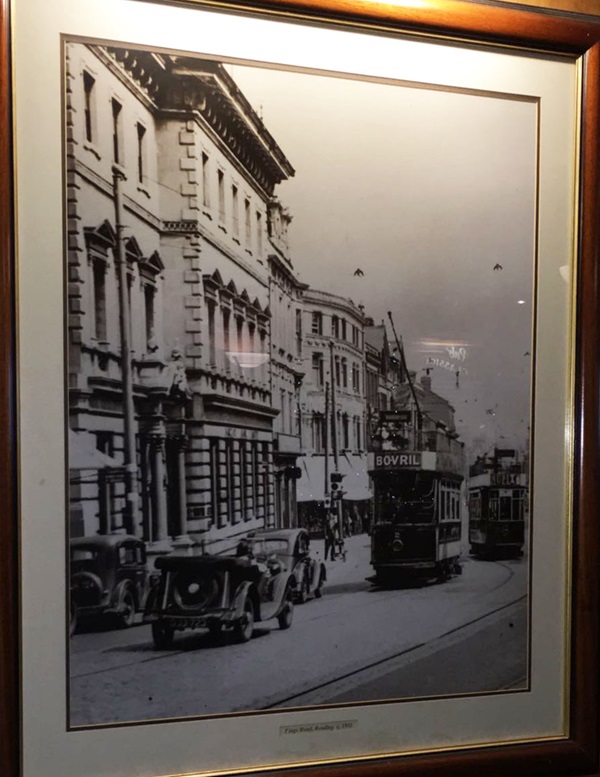
A photograph of Kings Road, Reading, c1910.
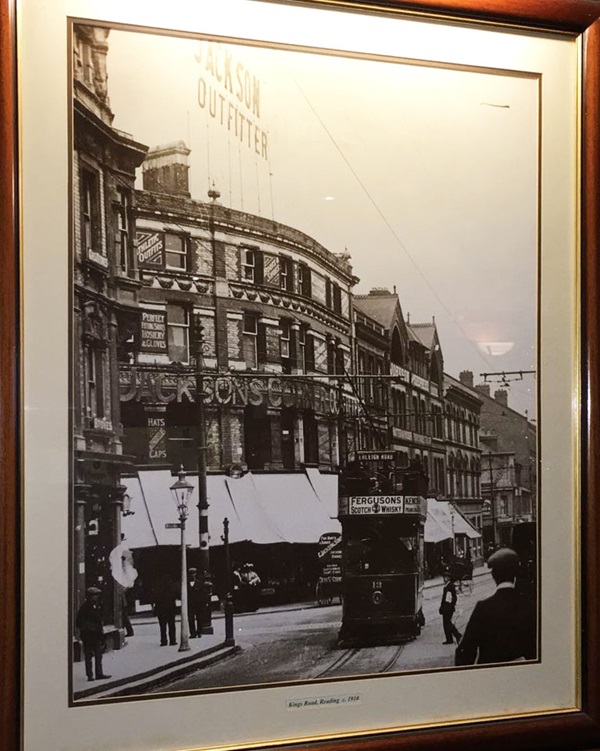
Text about Huntley & Palmer.
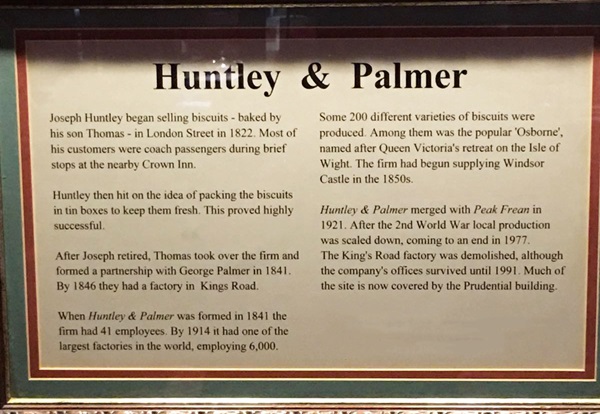
The text reads: Joseph Huntley began selling biscuits – baked by his son Thomas – in London Street in 1822. Most of his customers were coach passengers during brief stops at the nearby Crown Inn.
Huntley then hit on the idea of packing the biscuits in tin boxes to keep them fresh. This proved highly successful.
After Joseph retired, Thomas took over the firm and formed a partnership with George Palmer in 1841. By 1846 they had a factory in Kings Road.
When Huntley & Palmer was formed in 1841 the firm had 41 employees. By 1914 it had one of the largest factories in the world, employing 6,000.
Some 200 different varieties of biscuits were produced. Among them was the popular Osborne, named after Queen Victoria’s retreat on the Isle of Wight. The firm had begun supplying Windsor Castle in the 1850s.
Huntley & Palmer merged with Peak Frean in 1921. After the 2nd World War local production was scaled down, coming to an end in 1977. The King’s Road factory was demolished, although the company’s offices survived until 1991. Much of the site is now covered by the Prudential building.
External photograph of the building – main entrance.
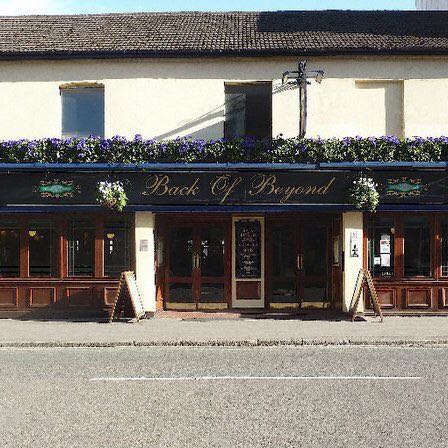
If you have information on the history of this pub, then we’d like you to share it with us. Please e-mail all information to: pubhistories@jdwetherspoon.co.uk